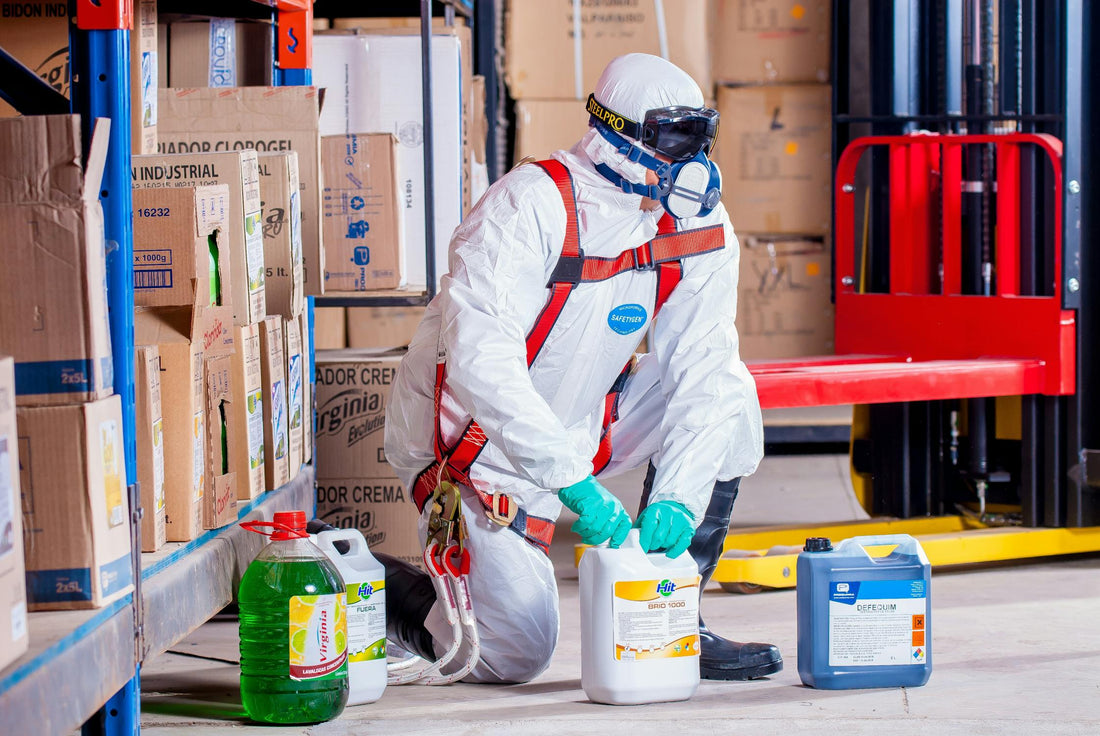
Understanding OSHA Safety Standards and Compliance: A Comprehensive Guide
Understanding OSHA Safety Standards and Compliance: A Comprehensive Guide
The Occupational Safety and Health Administration (OSHA) sets vital standards to ensure safe and healthy workplaces. Compliance isn't simply about avoiding fines; it's about creating a culture of safety that protects your employees' well-being and boosts productivity. This comprehensive guide delves into OSHA compliance, providing actionable insights and highlighting essential safety products to support your safety efforts. We'll explore the importance of compliance, key OSHA standards, implementation strategies, and the serious consequences of non-compliance. We'll also showcase how specific safety products can contribute to a safer work environment.
The Critical Importance of OSHA Compliance: Beyond the Fines
OSHA standards are designed to prevent workplace injuries, illnesses, and fatalities. Compliance significantly reduces workplace hazards, fostering a safer environment for everyone. The benefits extend far beyond simply avoiding penalties. A robust safety program contributes to a more positive and productive work environment. Consider these key advantages:
- Dramatically Reduced Workplace Accidents and Injuries: Proactive safety measures, driven by OSHA compliance, minimize risks, resulting in demonstrably fewer incidents. This directly translates to a healthier workforce and reduced suffering.
- Significantly Improved Employee Morale and Productivity: Employees feel valued and more confident when they know their safety is prioritized. This improved morale translates directly into increased productivity and higher quality work. Employees who feel safe are more focused and engaged.
- Substantial Lowering of Workers' Compensation Costs: Fewer injuries translate to lower insurance premiums and related expenses, a significant cost savings for any business. This cost-effectiveness makes safety a sound business investment.
- Enhanced Company Reputation and Brand Image: A visible commitment to safety builds trust with employees, clients, and the community. This positive reputation can attract top talent and improve client relationships.
- Complete Avoidance of Legal Penalties and Fines: Non-compliance can result in cripplingly costly fines and drawn-out legal battles, diverting resources away from core business functions.
- Increased Employee Retention: Employees are more likely to stay with a company that demonstrates a strong commitment to their safety and well-being.
Deciphering Key OSHA Standards and Their Practical Implications
OSHA covers a vast array of workplace hazards, each with specific standards for compliance. Understanding these key standards is fundamental for effective safety management. Here's a closer look:
- Hazard Communication Standard (HCS): This crucial standard mandates the proper labeling, identification, and handling of hazardous chemicals. Employees must receive comprehensive training on understanding Safety Data Sheets (SDS), including proper handling procedures, emergency response, and personal protective equipment (PPE) requirements. Clear and consistent communication about chemical hazards is paramount.
-
Personal Protective Equipment (PPE): Employers have a legal obligation to provide and enforce the correct use of PPE for specific job hazards. This includes, but isn’t limited to, eye protection, hearing protection, respiratory protection, gloves, and, critically, head protection. A properly fitted
 is essential for many work environments.
is essential for many work environments. -
Emergency Action Plans: These plans are not merely suggestions but legally required procedures for responding to various emergencies, including fires, evacuations, and medical emergencies. A detailed plan must be readily available to all employees, including clear evacuation routes, assembly points, and communication protocols. A well-stocked and strategically placed
 is a critical component of an effective emergency response.
is a critical component of an effective emergency response. - Lockout/Tagout (LOTO): LOTO procedures are non-negotiable for preventing catastrophic accidents. These procedures ensure that equipment is de-energized and locked out before maintenance or repair, preventing accidental start-ups that can lead to severe injuries or fatalities. Clear, documented procedures are crucial.
- Fall Protection: This standard is crucial for industries with elevated work areas. Employers must provide and rigorously enforce fall protection systems whenever employees work at heights, significantly reducing the risk of life-threatening falls.
- Electrical Safety: Protecting workers from electrical hazards is paramount. This standard covers procedures for proper grounding, insulation, lockout/tagout for electrical equipment, and safe work practices around electricity.
- Machine Guarding: Machines with moving parts must have appropriate guards to prevent worker injuries. Regular inspections of these guards are essential to ensure they remain effective.
Building a Robust OSHA Compliance Program: A Proactive Approach
Effective OSHA compliance demands a proactive and multifaceted approach. It's not a one-time fix, but an ongoing commitment to safety. Here’s how to build a successful program:
- Regular and Thorough Safety Inspections: Don't wait for accidents to occur. Conduct regular and comprehensive safety inspections of your workplace to identify and address potential hazards before they cause incidents. Document all inspections thoroughly.
- Comprehensive and Engaging Safety Training: Training isn’t a box to tick; it's an investment in your employees' well-being. Provide comprehensive safety training that goes beyond the basics. Make it engaging and interactive to enhance understanding and retention. Regular refresher courses are essential.
- Meticulous Record Keeping: Maintain accurate and detailed records of safety training, inspections, accidents, and incidents. This data is invaluable for identifying trends, assessing the effectiveness of your safety program, and making data-driven improvements.
-
Investment in Top-Tier Safety Equipment: Don't compromise on safety. Invest in high-quality, reliable safety equipment. For example, for safe storage and transport of flammable liquids, the
 provides essential protection. For enhanced visibility in low-light conditions, the
provides essential protection. For enhanced visibility in low-light conditions, the  improves safety significantly.
improves safety significantly. - Establishment of an Active Safety Committee: Create a safety committee with employee representation to foster open communication, encourage feedback, and collaboratively identify and address safety concerns. Employee involvement is key.
- Cultivating a Culture of Safety: Safety isn't just a program; it's a company culture. Promote a workplace where safety is a shared value, employees feel empowered to report hazards without fear of reprisal, and proactive risk management is the norm.
The Dire Consequences of OSHA Non-Compliance: A Costly Oversight
Failing to comply with OSHA standards can lead to far-reaching and devastating consequences that go beyond financial penalties:
- Substantial Fines and Penalties: OSHA violations can result in significant fines, potentially crippling a business financially.
- Extensive Legal Liability: Employers can face costly and protracted lawsuits from injured employees or their families.
- Severe Reputational Damage: Non-compliance can severely tarnish a company's reputation, making it difficult to attract and retain talent, secure contracts, and maintain positive relationships with stakeholders.
- Increased Insurance Premiums: A history of safety violations leads to higher workers' compensation insurance premiums, a substantial ongoing cost.
- Significant Business Disruption: OSHA violations can result in workplace shutdowns or operational restrictions, disrupting business activities and causing significant financial losses.
- Loss of Employee Trust: Non-compliance demonstrates a lack of commitment to employee well-being, eroding trust and morale.
Conclusion: Prioritizing Safety for a Thriving Business
Prioritizing OSHA compliance isn't just about adhering to regulations; it's a strategic investment in the long-term health, safety, and success of your business. A comprehensive safety program, thorough training, and high-quality safety equipment are not expenses, but essential safeguards. By creating a culture of safety, you protect your employees, enhance your reputation, boost productivity, and minimize the potentially devastating consequences of non-compliance. Remember, safety is not an option; it’s a responsibility.
Sources:
